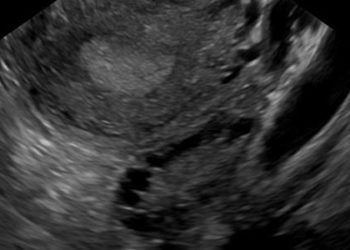Mesh may be harmful to vaginal structure and function
1. Contractile forces and nerve density were reduced in vaginal smooth muscle after mesh implantation.
2. Mesh stiffness and weight were predictive of smooth muscle outcomes.
Evidence Rating Level: 2 (Good)
Study Rundown: Pelvic organ prolapse (POP), or the descent of pelvic organs relative to the hymenal ring, is a common condition that occurs when vaginal support becomes inadequate. Risk factors include parity, age, and obesity. While many women remain asymptomatic for their lifetime, others experience bothersome symptoms of vaginal pressure, urinary incontinence, constipation, and sexual dysfunction. These symptoms can negatively impact daily activities and quality of life. Current treatment options include expectant management, conservative management with vaginal pessaries and pelvic floor muscles, and surgical intervention. Mesh is often used to improve success rates of surgical POP repair but can be associated with high complication rates when vaginal mesh is used. Previous studies have shown that mesh is associated with decreased thickness of vaginal smooth muscle, and that the degree of impact varies by mesh type. In the present animal study, authors found that mesh was associated with decreased contractile force after muscle, nerve and receptor stimulation as well as decreased nerve density in tissues in which stiffer meshes had been implanted. These findings support the existing literature and suggest that outcomes of surgical POP repair may depend on mesh qualities.
Strengths of this animal study include prospective data collection and evaluation of multiple mesh types. Limitations include small sample size and inclusion of animals without prolapse, whose vaginal muscle function likely differs from those with prolapse. Further investigation of the physiologic and clinical impact of mesh on human vaginal muscle is needed to better guide its use in surgical management for POP.
Click to read the study in AJOG
Click to read an accompanying editorial in AJOG
Relevant Reading: Vaginal degeneration following implantation of synthetic mesh with increased stiffness
In-Depth [animal study]: This study evaluated the impact of transvaginal mesh on vaginal muscle and function in rhesus macaques receiving Gynemesh™ PS (n = 7), Restorelle® (n = 7), UltraPro™ perpendicular (n = 6), UltraPro™ parallel (n = 7), and sham (n = 7) implants via abdominal sacrocolpopexy following hysterectomy. Outcomes of interest were vaginal smooth muscle contractile force after muscle, nerve and receptor stimulation as well as peripheral nerve density in grafted and non-grafted vaginal tissue.
Compared to sham implants, mesh implants were associated with decreased myofiber, nerve and receptor function in grafted areas only (p < 0.001, p = 0.002, p = 0.008 respectively). Peripheral nerve density was reduced with use of stiffer mesh types Gynemesh™ PS and UltraPro™ parallel (p < 0.05). Mesh stiffness and weight were predictive of myofiber and nerve function in grafted areas only (p<0.05) while receptor function was affected by mesh weight in both grafted and non-grafted tissue (p < 0.001, p = 0.002 respectively). Nerve density in both grafted and non-grafted areas was predicted by mesh stiffness and weight (p < 0.05).
Image: CC/Flickr/haru__q
©2015 2 Minute Medicine, Inc. All rights reserved. No works may be reproduced without expressed written consent from 2 Minute Medicine, Inc. Inquire about licensing here. No article should be construed as medical advice and is not intended as such by the authors or by 2 Minute Medicine, Inc.









